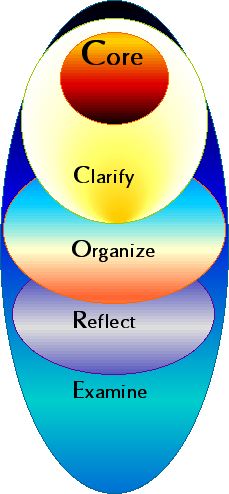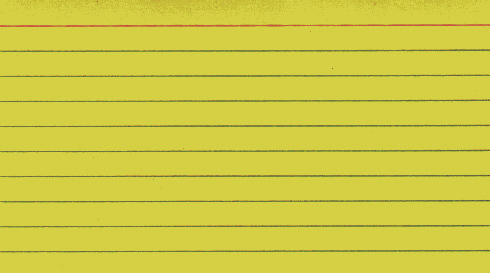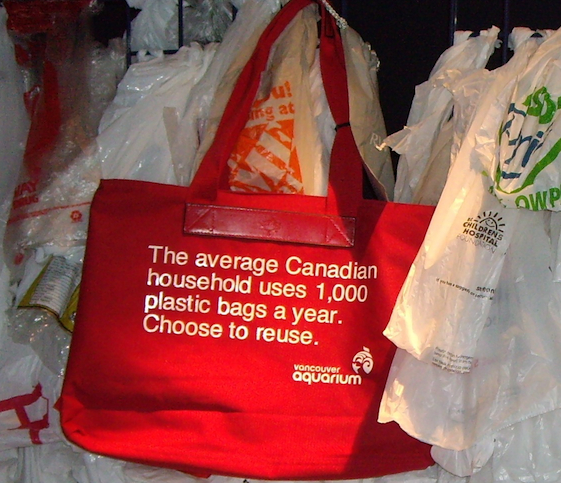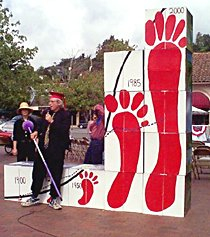overview | weeks | related pages | what is | animations | concepts | course title | wiki-based | story
Population: The World at Seven Billion; Migration as a consequence or as a cause of overpopulation, over-use of resources and over-consumption?
"like a swarm of bees is sent out from a single country, either when friends leave friends, owing to some pressure of population or other similar necessity, or when a portion of a state is driven by factions to emigrate."
Plato, The Laws, Book IV, 360 BC.
"we've already done deep and systemic damage."
Where are your nations on this map of humankind's movements?
Organize to reflect on the meanings of Siry & McKibben:
A clarity of thought, so organized as to reflect the means of evaluating concepts of the problems & ideas about how to adjust to a dynamic reality.
Organize to arrange in a logical order the data for your nations based on clusters that reveal the defined terms and classifications based on demographic evidence.
Reflect - a capacity to summarize and classify in order to compare data on total fertility, infant mortality, per capita income, and life expectancy that can be assembled in contrasting patterns to reveal impact in such a manner as to identify an underlying observation, not always apparent.
"Birth Control is not a charity."
Sanger: Chapter one
Use of Modern Contraception Among Married Women, by Income Quintile
"There is no more practical decision than how many children to have."
125, McKibben
“their impact on the world would be fairly small.”
p. 72. McKibben: Maybe One
"Its all an enormous math problem, where some calculation of our numbers multiplied by our impact must balance against the capacities of the planet."
" . . . large vertebrate evolution has come to an end."
pp. 124-125, McKibben: Maybe One
Loading
Siry, 4 on Migration: Revising the I=PAT formula & affluence; I = PAT & McKibben, pp. 72-104, 125.
Affluence: any state, or the status of having a great deal of money, or the quality of wealth as derived from a quantity of investments or income.
53 percent of the world lives in cities.
The population of Europe from 1400-1700.
From 80 per 1000 the Infant mortality rate has dropped to 38 per 1000 in 45 years.
The world's average Gross National Income is $14,210 per year.
For comparisons:
$ 37,470 more developed nations.
$ 8, 920 less developed nations.
$ 1,970 least developed nations.
Impact as a measure of population's mobility
Today there are an estimated 230 million international migrants, a number that is projected to double to over 400 million by 2050.
video see – http://www.prb.org/Topics/ImmigrationMigration.aspx
infographic – http://www.prb.org/Multimedia/Infographics/2014/infographic-global-migration.aspx
http://www.prb.org/Publications/Reports/2014/migration-and-environment.aspx
Use the Wiki for this class: The World at 7 Billion.
Population Reference Bureau and World Bank data are both available here.
A learning objective for these weekly readings is for participants to describe how migration influences population and describe how the parts of the population equation, are affecting each nation through impact (I = P A T formula) and social conditions.
1) Active participants will analyze and define explicit examples of affluence as defined by social stratification from McKibben pp. 72-81, and how that can influence migration patterns (Easter island discussion pp. 82-87).
2) Active participants will add five different measures to the "impact equation" using examples of these measures from McKibben, such as longevity, infant mortality, contraceptive, use or mobility.
3) Be able to describe the demographic transition so that you can tell what stage of this transition each of your countries is in.
Write about where altered economic, and social situations may cause populations to move and under what conditions has the demographic transition been most obvious in countries? In writing explain the three suggestions above and restate the arguments of Sanger, Siry and McKibben with regard to changes in population growth since Malthus wrote in 1798.
For example see: China & Historical patterns of population.
and for current populations only see this table & chart.
Instructions
The consequence or the cause of overpopulation, over-use of resources and over-consumption?
1. Describe what you read in Siry or McKibben and what you think that means to one or two partners:
“In China, in the last decade, per capita income had doubled. Though to us still Lilliputian. People there are twice their old size.”
“of course a pig takes four pounds of corn to produce one pound of pork.”
McKibben p. 72
Note the need for water to sustain the corn:
"We were always taught that it takes 9500 litres to 15,000 litres (2500-4000 gallons with 5000 gallons potentially) of water per bushel.
As for soybeans about 3 times as much water and 2 times for wheat per bushel respectfully.
Corn variety maturity length will affect seasonal water use.
For example, water use during a particular growing season will be greater for 100 day corn than for 90 day corn.
The water that evaporates from the soil near a corn plant plus the soil water used by the corn is called evaprotranspiration (ET) or simply water use. Only a small fraction (0.1% to 1%) of the water used by a plant is held within the plant. The majority of water used by the plant is ultimately lost via transpiration."
see – Crop-view blog; July 7, 2012.
Human caloric demand
2,500 calories per day is the level of nutrition humans need.
McKibben, p. 73.
Actually McKibben over estimates the caloric intake level:
"2,000 calories is a rough average of what people eat in a day. "
"Within a healthy balanced diet, a man needs around 10,500kJ (2,500kcal) a day to maintain his weight. For a woman, that figure is around 8,400kJ (2,000kcal) a day."
The UK; National Health Service, NHS.
Findings:
"The latest figures show that in England 65% of men and 58% of women are overweight or obese. That means many of us are eating more than we need, and need to eat less."
Active participants should describe to the class verbally and in writing preliminary data on the IPAT equation emphasizing how population size, growth rate, and family size are related but do not necessarily depend on per capita economic data on their selected nations.
3. Write an essay of sufficient length (1000 words) to cover a description and an analysis of your ten nations and the data you have for them. Start by describing these above findings and analyzing what the data reveal about the challenges facing these nations with respect to demographic and economic trends currently supported by the data. For example can you describe how contraception is or is not a form of population decline with deep influences on human conduct or behavior in groups if not all of nations that you have selected?
So verbally and in writing summarize evidence found from the data sheets in contrast to the beliefs of three different authors: Siry, Malthus, & Swift.
Coming Weeks in further detail.
Clarify, Organize, Reflect, Examine = CORE
Clarify to organize the ways that population [P= BR – DR (+/- NMR)] can be seen as a factor in the I=P*A*T equation:
- Where BR is Fertility or natality rate Births per 1000
- Where DR is Mortality or death rate or Deaths per 1000
- Where NMR is immigration – emigration or migration or net migration rate
and the I = P * A * T equation:
- I is for impact
- = equal to, or equals
- P is for population
- * is for times or "X"
- A is for Affluence{GNI PPP per capita (US$)}
- T is for Technology (millions of tons of carbon emissions).
Clarify to organize in order effectively reflect on limiting or shaping human behavior:
• Seventh week: Margaret Sanger & public health in addressing the synergy of mechanisms that act as a means of decreasing populations; the examples from China.
• Eight-Ninth weeks - reports: How to write a cogent 2000 word report on Sanger, McKibben, & Siry? Describe how the roles of migration, population dynamics and density create identifiable patterns in nations. By comparing these data patterns, structure a means of depicting the factors that alter a nation's population profile over time.
Edward Smith Deevey Jr. was demographer [photograph below] who patterned the past with respect to three huge population growth spurts.
Authors:
- Joseph Siry, Population and Environment.
- Jonathan Swift, "A Modest Proposal" 1729.
- Thomas Malthus, "An Essay on Population" 1798. (meaning)
- Bill McKibben, Maybe One, (critique of this book).
- Margaret Sanger, R.N. The Pivot of Civilization, 1922.
- Garrett Hardin, The Ostrich Factor.
- International press list of newspapers.
Vocabulary:
Lilliputian, small, trivial, of little consequence by comparison. Derived in the 18th century from Jonathan Swift's imaginary land called "Lilliput," filled with people only six inches tall, and where small disputes were considered to be very big deals.
 Using population profiles to see changes
Using population profiles to see changes
A history of population change
What's behind the arguments? with Dr. Joel Cohen
![]()
Some important data to explain with regard to your countries & regions:
life expectancy at Birth
density is "Population per square kilometer"
density dependent disease
affluence
social stratification
vice – see Malthus
per capita income see: GDP vs. GNP and GNI vs. GDP
aggregate is the opposite of per capita or per person
variable
fertility or natality is the birth rate per 1000
cohort is the people born in a given year
mortality as opposed to morbidity
total fertility rate
infant mortality rate
contraception
infanticide
abortifacient
euthanasia
eugenics
Population dynamics: What is it and how do we explain population dynamics with regards to– A generation's experiences of Wars, famines, & birth control.
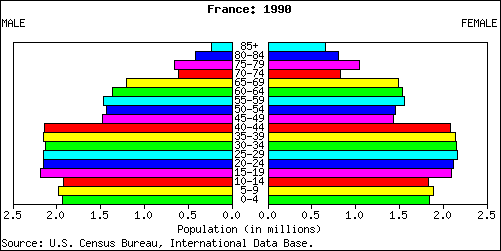
Population dynamics France and the wars.
What is human population's and consumption's impacts on people based on all of the authors when compared and contrasted with the data you collected in the 12 or more nations selected? }
The quote is from McKibben: Maybe One, page 104.
final essay: minimally 8 pages excluding the footnotes, or endnotes and bibliography; with a data table, bullet points, and summary
A summary of which you post to wiki { You verbally explain your research & analysis findings at the final exam.
You verbally present that summary at the final exam hour to the class.
The final exam is a post-test and a four minute verbal presentation of the essay's summary findings presented to the class. The 8 page essay is redrafted and due then on that day.
12/9, Tuesday, Final Exam 2-4 PM. You stay for the entire 2 hours.

.gif)
